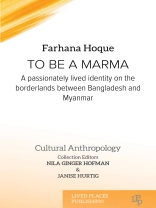How does being located in borderlands impact cultural identity, through both assimilation and distinctness?
This exploration of the self-identified Marma group, the second largest ethnic group in the Chittagong Hill Tracts (CHT) of Bangladesh, discusses various aspects of identity creation, maintenance and adaptation in the unique setting of the geo-political border between South and Southeast Asia. With the fluidity of change and ethnic composition that is typical of geographical borders, the expectation is constant adaptation resulting in slow change of cultural identity over time. In the Marma case, adaptations are made in order to maintain their cultural distinctiveness. Drawing from stories of the people who hold this identity, the book considers how cultural groups navigate the constant demands on their identity whilst living in borderlands.
قائمة المحتويات
Introduction
Chapter 1: Teacher and student guide
Learning objective
Learner objectives
Suggested activities (general)
Suggested activities (by chapter)
Recommended projects
Chapter 2: The project and the people
Chapter 3: A toolkit to study identity on the borderlands: A brief summary
Chapter 4: Marma kinship and marriage rituals
Chapter 5: Ethnic endogamy: land, culture and religion
Chapter 6: Migration and settlement
Chapter 7: The invention of Marma material culture and ceremonials
Chapter 8: Conclusions
عن المؤلف
Dr Janise Hurtig is an educational anthropologist and community educator and researcher. Her teaching and writing take place at the intersections of adult and popular education, gender and feminism, community development and social change in the Chicago area and in Venezuela. Janise received her Ph.D. in Anthropology from the University of Michigan. She is currently part-time faculty in De Paul University’s School for Continuing and Professional Studies, coordinator of the Community Writing Project, and an adult educator at the Howard Area Community Center.












